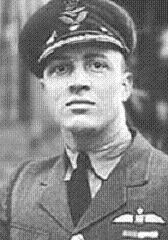Andrew Edward McKeever facts for kids
Quick facts for kids
Andrew McKeever
|
|
|---|---|

Andrew Edward McKeever, 1919
|
|
| Nickname(s) | Hawkeye |
| Born | 21 August 1894 Listowel, Ontario, Canada |
| Died | 25 December 1919 (aged 25) Toronto, Ontario, Canada |
| Allegiance | Canada United Kingdom |
| Service/ |
Royal Flying Corps Royal Air Force Canadian Air Force |
| Years of service | 1914–1919 |
| Rank | Lieutenant Colonel |
| Commands held | No. 1 Squadron, C.A.F. |
| Battles/wars | World War I |
| Awards | Distinguished Service Order Military Cross & Bar Distinguished Flying Cross Croix de Guerre (France) |
Andrew Edward McKeever was a brave Canadian pilot during World War I. He was known as a "flying ace" because he and his gunners shot down 31 enemy planes. He was the top pilot flying the Bristol F.2 Fighter plane. McKeever received several important awards for his courage, including the DSO, the MC & Bar, and the DFC.
Contents
Early Life and Beginnings
Andrew McKeever was born in Listowel, Ontario, Canada, on August 21, 1894. His parents were Bella Henderson and William McKeever. His father worked as a grocer and butcher. Andrew went to Central Technical School in Toronto. After school, he worked as a bank teller until 1916.
Joining the Air Force
Andrew McKeever first joined a local army group called the Queen's Own Rifles of Canada. He was a private, which is a basic soldier rank. In November 1916, he was accepted into the Royal Flying Corps. This was the air force of the United Kingdom at the time. He traveled to England for flight training on November 25, 1916. He became a probationary lieutenant on December 5.
Flying the Bristol Fighter
After his training, McKeever joined No. 11 Squadron on May 28, 1917. At first, they flew older planes called F.E.2s. Soon after, they got new planes called Bristol F.2A fighters. These planes were also known as the "Brisfit." The Brisfit was a two-seater plane. One person flew it, and the other operated a machine gun.
McKeever's jobs included taking photos from the sky. His observer would use a camera to take pictures. The Brisfit was good for this. It was also fast and easy to fly. This meant it could fight enemy planes well.
Becoming a Flying Ace
McKeever became a flying ace by destroying an enemy plane on June 26, 1917. He also forced another plane out of the sky that day. On July 7, he and his gunner, Powell, shot down three more planes. One was destroyed, and two spun out of control. McKeever achieved this amazing feat three more times. He had triple victories on August 5, September 23, and October 31, 1917.
On October 3, McKeever had reached 20 victories. He was given another Military Cross award. This showed his continued bravery.
A Famous Battle
On November 30, 1917, McKeever had a very famous battle. He was flying his Brisfit plane (number A7288). He attacked two German planes. These planes were protected by seven Albatros D.V fighters. McKeever and Powell fought bravely. They destroyed four of the Albatros planes. One of them even caught fire!
Then, Powell's machine gun stopped working. McKeever pretended his plane was shot down. He quickly dived away from the fight. He flew very low, only 25 feet above the ground. A thick fog helped hide him from the enemy planes. He then flew quickly back to his base. The remaining German planes gave up the chase. This incredible battle earned Captain McKeever the Distinguished Service Order award.
McKeever achieved all 31 of his victories in a two-seater fighter plane. This made him one of the top two-seater fighter aces. Most of his victories were against German Albatros D.V fighters. Seven different gunners helped him achieve these victories. One of them, Lieutenant Leslie Powell, became an ace himself. He had 19 victories, and 18 of those were with McKeever.
In total, McKeever and his gunners destroyed 18 enemy planes. They also forced 13 planes to go "out of control."
After the War
On January 25, 1918, McKeever and his observer were sent home from combat. Major McKeever then helped create the Canadian Air Force. He worked with other famous aces like William Bishop and Raymond Collishaw. McKeever organized and commanded the first squadron of this new air force. However, World War I ended before his squadron could fly their Sopwith Dolphin planes into battle. The Canadian government then closed down the new air force.
After the war, McKeever accepted a job managing an airfield. This airfield was in Mineola, New York. But before he could start, he was in a car accident. This happened in his hometown of Listowel. He broke his leg, and other problems followed. Andrew McKeever sadly passed away on Christmas Day, 1919. He died from a blood clot in his brain.
Images for kids



